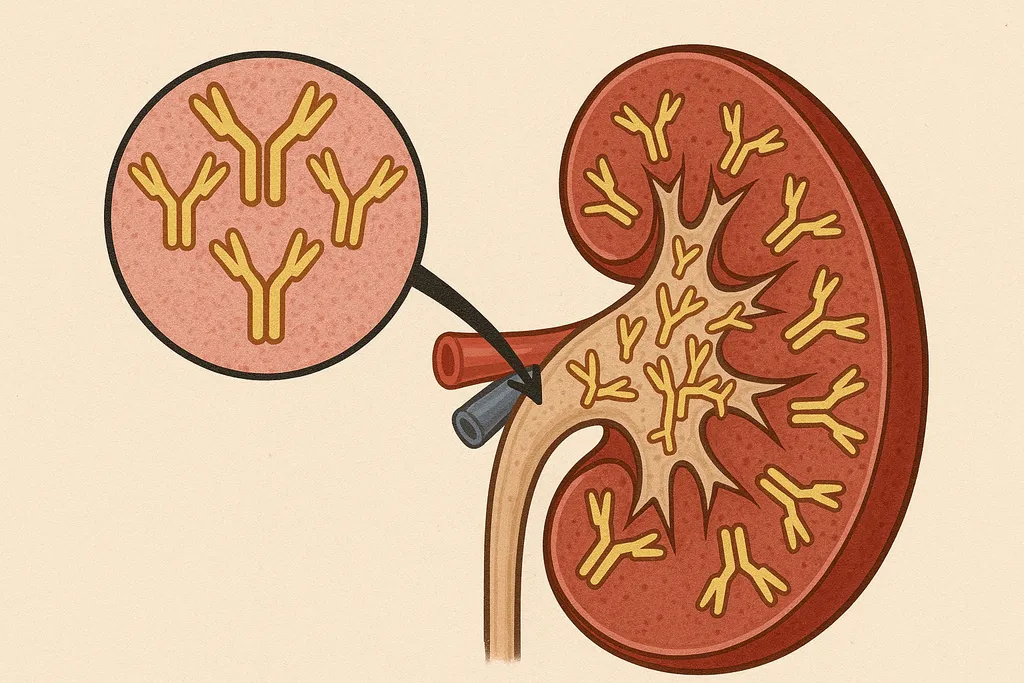MCRT Webcast: Myeloma Imaging

Imaging techniques like X-rays and early generation MRI were once used to determine the extent of bone damage in myeloma patients—damage done by myeloma cells after it occurred. Advances in imaging now can detect potential damage before it happens so that preventive measures can be taken. Moreover, the latest techniques can direct targeted therapy to be more effective, less toxic and determine more effective strategies for relapsed and refractory myeloma. Drs. Jens Hillengass and Ola Landgren discussed how myeloma imaging techniques are important tools and methods to therapy decisions in the Myeloma Crowd Round Table Interactive Webcast held on Saturday, September 12, 2020.
Jens Hillengass, MD, Roswell Park Comprehensive Cancer Center, Buffalo, NY: Myeloma Imaging
- Imaging shows changes in bones and bone marrow: disease is in the bone marrow, the symptoms are in the bone
- Imaging can detect disease earlier
- Diffuse infiltration of myeloma cells into the fatty bone marrow
- Focal lesions are areas of concentration of myeloma cells that create small tumors in bone
- 30% of patients have diffuse infiltration, 30% have focal lesions, 30% have mix of both, 10% have normal bone marrow
- Differences in the way MRI and CT “see” myeloma activity; MRI can see focal lesions, CT can determine if they are osteolytic (holes in bones)
- Goal is to prevent focal lesions from becoming osteolytic
- Smoldering myeloma patients who have more than one focal lesion seen in MRI increase the possibility of progressing to symptomatic myeloma
- If focal lesions do not change over time, there is less risk of progression
- One or two lesions that are not growing, indicates lower risk of progression
- Those whose lesions grow have a 16.5-fold risk of progression
- Researchers think that the MRI-indicated focal lesions predict progression of bone lesions
- High-risk smoldering myeloma patients who have been treated in clinical trials benefit from their treatment and many of them became MRD-negative [for more information on MRD, click to see the Myeloma Crowd Round Table Interactive Webcast on MRD here]
- International Myeloma Working Group Guidelines
- CT is more sensitive and informative than X-rays, in a comparative study, 25% of patients who were negative in X-rays were positive in CT
- For high-risk MGUS and smoldering myeloma, whole body low dose CT is recommended
- For symptomatic myeloma either CT or PET scans are recommended
- MRI is effective for monitoring treatment, but it doesn’t distinguish between active and inactive disease, therefore PET-CT is preferred if available
- Whole body diffusion weighted imaging is new, helps to identify lesions with more contrast
- Biopsies of focal lesions provide more specific information to guide therapy
Ola Landgren, MD, PhD, Memorial Sloan Kettering Cancer Center, New York, NY: Novel Imaging in Myeloma: Development of Targeted Immuno-PET
- Spatial characterization (seeing disease): current techniques still have limitations
- Targeted immuno-PET is analogous to targeted treatment
- Preclinical models (mice): create a targeted myeloma-specific PET tracer will enhance the ability to improve spacial characterization in myeloma patients
- Daratumumab is synthesized with PET tracer to better see therapeutic activity
- Specifically designed antibodies to bind to myeloma cells that can be identified by PET imaging at the optimal times after administration
- Phase I trials have proven technique to be safe and optimal timing has been determined
- Phase II study will open in 4th quarter of 2020 to determine:
- The level of disease burden both at diagnosis or relapse
- How patients respond to therapy, number of focal lesions and MRD level
- If relapse can be predicted
- Understanding genomic profiling at relapse
- Can factors leading to progression be standardized?
- Is there evidence of pre-existing but previously undetected disease in specific sites of relapse (is it one or multiple sites)?
- How does genomic evolution occur over time?
- Study hypothesis: genomic profiling of samples from different sites in the body will indicate how disease spreads over time
- Sequencing studies done with authorized autopsies show that average number of mutations is >10,000, evolving over many years
- At diagnosis, there are cells that “go out” and “seed” future sites of disease activity, evidence that “one cell spreads everywhere”
- If that cell can be identified and treated, it may stop relapse (hypothesis)
Audience Questions & Answers
- 0:21 - Dr. Landgren discuss phase II study on Immuno-PET using daratumumab.
- 1:20 - How does one do precision medicine when there are as many as 10,000 mutations?
- 3:55 - Dr. Hillengass discusses his study on doing bone marrow biopsies.
- 6:15 - Dr. Hillengass discusses his study of physical activity for myeloma patients in HealthTree. (“We think that doing nothing is definitely worse than doing something.”)
- 8:41 - How effective is PET/CT with or without contrast in determining plasma cell changes in the bone marrow (also in smoldering myeloma)?
- 13:50 - What does one do if one gets conflicting advice from a radiologist and an oncologist?
- 19:47 - Do lesions heal?
- 22:25 - How are myeloma specialists using the results of PET/CT scans, or other imaging techniques, with MRD (minimal residual disease) testing? [More information can be found in the Myeloma Crowd Round Table Interactive Webcast on MRD.]
- 28:46 - (Re: Example of a patient who has had 11 PET/CT scans) Are there other methods to monitor bone metabolism or activity with tests that don’t require radioactive agents, such as blood tests, or are there clinical trials that one could join exploring other techniques?
- 34:24 - What scans require contrast agents and what are the current guidelines for patients with kidney issues?
- 37:13 - Would the Immuno-PET clinical trial (discussed in Dr. Landgren’s presentation above) work for light chain amyloidosis?
- 38:27 - What imaging techniques are best for monitoring patients in remission to capture early relapse and why?
- 40:40 - A short HealthTree demonstration.
Questions Answered by Dr. Hillengass in Chat Forum
- Can PET-CT scans reveal the difference between active lesions with low uptake and lesions that have healed?
Answer: Usually PET positive lesions are still active, but there is some data that the bone healing can also show up in PET. Dr. Landgren’s new PET/CT will help to differentiate that.
- For those who enjoy resistance training including training with free weights, do you recommend more frequent imaging to avoid fractures caused by the strain of the resistance or weights?
Answer: I would recommend imaging before to make sure that there is no fracture risk. We currently only let our patients train under supervision by a trainer who is familiar with myeloma to make sure that all the movements are performed in a safe way.
- How often and what imaging should be done?
Answer: It depends on the stage of the disease. In smoldering myeloma I recommend yearly MRI. In symptomatic myeloma I recommend PET/CT at first diagnosis, after the main treatment (e.g. stem cell transplantation) and than once a year (if covered by the insurance). This is, of course, based on symptoms.
- Is there any benefit to having imaging done after a sCR and or a MRD-negative diagnosis?
Answer: Yes, in order to determine that there are no residual lesions in another part in the body than the one where the biopsy was done to assess MRD.
- After 9 years of remission, I relapsed. I have not been on maintenance for 8 years but I was taking Zometa for every three months. I had a PET last month and it did not show any new lesions. Is that because of the Zometa?
Answer: Good question, but difficult to say. I have a few patients where osteolytic lesions have healed but we don’t know yet, which patients show this. I strongly support using Zometa, but after such a long time Zometa can be harmful because it limits the bone turnover. Please discuss with your provider.
- My husband has not had MRI because of he has a pacemaker. His last PET about three years ago did not show bone issues. Our oncologist does not recommend further PET scans because it would not change treatment, which is currently stable on daratumumab only. Does that make sense?
Answer: After 3 years, I personally would repeat a PET/CT. In VERY rare patients the disease can come back without signs in the blood or urine. But again that is very rare.
- Does a PET scan show focal liaisons? What does MRI show that a PET Scan can't?
Answer: Yes, both show focal lesions. MRI shows lesions that have a low metabolism, something that might be negative in PET. But this is rather rare. MRI has also the benefit that it does not use radiation. So in early stages I usually use MRI in follow up rather PET. In case of long term follow up, I then go back to MRI.
- What is a DWIB whole body MRI diffusion scan? Does it identify bone marrow blood supply and of the abdomen/pelvis without contrast? When is or should this be done?
Answer: This is almost the same as DWI, which I talked about. It is an MRI technique that measures the molecular movement of water molecules. In tissues with high cellularity these molecules are limited in their movements, in tissues with low cellularity or high perfusion (many blood vessels) they can move further.
- Can you comment on the American Society of Hematalogy (ASH) published study that gadolinium containing contrast agents promote myeloma cell growth?
Answer: I know the publication but the study was only done in cells and animals. It never became a full paper and we have analyzed several hundred patients who have received Gd MRI contrast agent and couldn’t find any negative prognostic effects. Patients who had significant renal issues had less improvement of their renal function. Also, we don’t need contrast agents for most of the questions we want to answer in myeloma. All the images shown today were done without contrast agents.
- Which is the best physician to read the PET/CT film? Have had myeloma specialists disagree about what they see. Should radiologist have the best skill at this?
Answer: This depends very much on the physicians. Difficult to say. It should be the nuclear medicine specialist, but I am a hematologist and sometimes overrule my colleagues too.
Questions Answered by Dr. Landgren in Chat Forum
- Experts say that Multiple Myeloma is incurable because even if one is in stringent complete response and MRD-negative, a minuscule amount of myeloma can still be in the marrow and can and will come back at some point. Is this correct and can scans show this infinitesimal amount of myeloma?
Answer: I think a more accurate way to say this is "we do not yet have an established curative therapy for myeloma.” That being said, there is a small subset of patients who have sustained MRD negativity over many years, some of them stay on maintenance and some of them go off therapy, and yet there is no relapse after over 10 years of followup. Unfortunately, this proportion of patients is quite small and we don't yet have the ability to predict who these patients are ahead of time. Our projections based on emerging data is that newer/better therapies will result in higher rates of sustained MRD-negativity.
- If, indeed, one residual diseased cell is the culprit in relapsing myeloma, does that change your approach to early treatment. For instance, would more aggressive therapies with MRD negativity be required to clear these potentially dangerous cells?
Answer: Currently no, it does not. When we have done more work (and hopefully have found markers underlying the "treatment escape" that allows the cells to survive (focal MRD). We will open a new myeloma research program in Miami that is designed to go after this. We will move fast forward. Stay tuned! [Dr. Landgren respond to another comment about his upcoming move to Miami, FL:] I am thrilled to join Sylvester Comprehensive Cancer Center/Universiy of Miami as the new leader for the Myeloma Program. I will join on November 1. My myeloma clinic will open in Miami, and my telemedicine clinic will be open for patients independent of where the patient lives.
- What is the name of the new clinical trial?
Answer: It does not have a catchy name yet: First-in-Human Imaging of Multiple Myeloma Using 89Zr-DFO-daratumumab, a CD38-targeting Monoclonal Antibody.
- You mentioned that FDG is based on glucose uptake into the tumor cells. Why are we not using this information and also evaluating treatments that block glycolysis? And more practically, why are patients who have FDG and lesions identified not intensely monitored regarding control of glucose levels via diet and drugs?
Answer: Standard clinical guidelines recommend that patients shall not have glucose intake right before PET/CT. It is not perfect. Because FDG PET/CT is used for all types of diseases, it is complex. This is a topic that is handled by radiologists, not hematologist/oncologists.
Thanks to our Round Table sponsors
 .
.  .
. 
 .
. 
 .
.  .
. 


Imaging techniques like X-rays and early generation MRI were once used to determine the extent of bone damage in myeloma patients—damage done by myeloma cells after it occurred. Advances in imaging now can detect potential damage before it happens so that preventive measures can be taken. Moreover, the latest techniques can direct targeted therapy to be more effective, less toxic and determine more effective strategies for relapsed and refractory myeloma. Drs. Jens Hillengass and Ola Landgren discussed how myeloma imaging techniques are important tools and methods to therapy decisions in the Myeloma Crowd Round Table Interactive Webcast held on Saturday, September 12, 2020.
Jens Hillengass, MD, Roswell Park Comprehensive Cancer Center, Buffalo, NY: Myeloma Imaging
- Imaging shows changes in bones and bone marrow: disease is in the bone marrow, the symptoms are in the bone
- Imaging can detect disease earlier
- Diffuse infiltration of myeloma cells into the fatty bone marrow
- Focal lesions are areas of concentration of myeloma cells that create small tumors in bone
- 30% of patients have diffuse infiltration, 30% have focal lesions, 30% have mix of both, 10% have normal bone marrow
- Differences in the way MRI and CT “see” myeloma activity; MRI can see focal lesions, CT can determine if they are osteolytic (holes in bones)
- Goal is to prevent focal lesions from becoming osteolytic
- Smoldering myeloma patients who have more than one focal lesion seen in MRI increase the possibility of progressing to symptomatic myeloma
- If focal lesions do not change over time, there is less risk of progression
- One or two lesions that are not growing, indicates lower risk of progression
- Those whose lesions grow have a 16.5-fold risk of progression
- Researchers think that the MRI-indicated focal lesions predict progression of bone lesions
- High-risk smoldering myeloma patients who have been treated in clinical trials benefit from their treatment and many of them became MRD-negative [for more information on MRD, click to see the Myeloma Crowd Round Table Interactive Webcast on MRD here]
- International Myeloma Working Group Guidelines
- CT is more sensitive and informative than X-rays, in a comparative study, 25% of patients who were negative in X-rays were positive in CT
- For high-risk MGUS and smoldering myeloma, whole body low dose CT is recommended
- For symptomatic myeloma either CT or PET scans are recommended
- MRI is effective for monitoring treatment, but it doesn’t distinguish between active and inactive disease, therefore PET-CT is preferred if available
- Whole body diffusion weighted imaging is new, helps to identify lesions with more contrast
- Biopsies of focal lesions provide more specific information to guide therapy
Ola Landgren, MD, PhD, Memorial Sloan Kettering Cancer Center, New York, NY: Novel Imaging in Myeloma: Development of Targeted Immuno-PET
- Spatial characterization (seeing disease): current techniques still have limitations
- Targeted immuno-PET is analogous to targeted treatment
- Preclinical models (mice): create a targeted myeloma-specific PET tracer will enhance the ability to improve spacial characterization in myeloma patients
- Daratumumab is synthesized with PET tracer to better see therapeutic activity
- Specifically designed antibodies to bind to myeloma cells that can be identified by PET imaging at the optimal times after administration
- Phase I trials have proven technique to be safe and optimal timing has been determined
- Phase II study will open in 4th quarter of 2020 to determine:
- The level of disease burden both at diagnosis or relapse
- How patients respond to therapy, number of focal lesions and MRD level
- If relapse can be predicted
- Understanding genomic profiling at relapse
- Can factors leading to progression be standardized?
- Is there evidence of pre-existing but previously undetected disease in specific sites of relapse (is it one or multiple sites)?
- How does genomic evolution occur over time?
- Study hypothesis: genomic profiling of samples from different sites in the body will indicate how disease spreads over time
- Sequencing studies done with authorized autopsies show that average number of mutations is >10,000, evolving over many years
- At diagnosis, there are cells that “go out” and “seed” future sites of disease activity, evidence that “one cell spreads everywhere”
- If that cell can be identified and treated, it may stop relapse (hypothesis)
Audience Questions & Answers
- 0:21 - Dr. Landgren discuss phase II study on Immuno-PET using daratumumab.
- 1:20 - How does one do precision medicine when there are as many as 10,000 mutations?
- 3:55 - Dr. Hillengass discusses his study on doing bone marrow biopsies.
- 6:15 - Dr. Hillengass discusses his study of physical activity for myeloma patients in HealthTree. (“We think that doing nothing is definitely worse than doing something.”)
- 8:41 - How effective is PET/CT with or without contrast in determining plasma cell changes in the bone marrow (also in smoldering myeloma)?
- 13:50 - What does one do if one gets conflicting advice from a radiologist and an oncologist?
- 19:47 - Do lesions heal?
- 22:25 - How are myeloma specialists using the results of PET/CT scans, or other imaging techniques, with MRD (minimal residual disease) testing? [More information can be found in the Myeloma Crowd Round Table Interactive Webcast on MRD.]
- 28:46 - (Re: Example of a patient who has had 11 PET/CT scans) Are there other methods to monitor bone metabolism or activity with tests that don’t require radioactive agents, such as blood tests, or are there clinical trials that one could join exploring other techniques?
- 34:24 - What scans require contrast agents and what are the current guidelines for patients with kidney issues?
- 37:13 - Would the Immuno-PET clinical trial (discussed in Dr. Landgren’s presentation above) work for light chain amyloidosis?
- 38:27 - What imaging techniques are best for monitoring patients in remission to capture early relapse and why?
- 40:40 - A short HealthTree demonstration.
Questions Answered by Dr. Hillengass in Chat Forum
- Can PET-CT scans reveal the difference between active lesions with low uptake and lesions that have healed?
Answer: Usually PET positive lesions are still active, but there is some data that the bone healing can also show up in PET. Dr. Landgren’s new PET/CT will help to differentiate that.
- For those who enjoy resistance training including training with free weights, do you recommend more frequent imaging to avoid fractures caused by the strain of the resistance or weights?
Answer: I would recommend imaging before to make sure that there is no fracture risk. We currently only let our patients train under supervision by a trainer who is familiar with myeloma to make sure that all the movements are performed in a safe way.
- How often and what imaging should be done?
Answer: It depends on the stage of the disease. In smoldering myeloma I recommend yearly MRI. In symptomatic myeloma I recommend PET/CT at first diagnosis, after the main treatment (e.g. stem cell transplantation) and than once a year (if covered by the insurance). This is, of course, based on symptoms.
- Is there any benefit to having imaging done after a sCR and or a MRD-negative diagnosis?
Answer: Yes, in order to determine that there are no residual lesions in another part in the body than the one where the biopsy was done to assess MRD.
- After 9 years of remission, I relapsed. I have not been on maintenance for 8 years but I was taking Zometa for every three months. I had a PET last month and it did not show any new lesions. Is that because of the Zometa?
Answer: Good question, but difficult to say. I have a few patients where osteolytic lesions have healed but we don’t know yet, which patients show this. I strongly support using Zometa, but after such a long time Zometa can be harmful because it limits the bone turnover. Please discuss with your provider.
- My husband has not had MRI because of he has a pacemaker. His last PET about three years ago did not show bone issues. Our oncologist does not recommend further PET scans because it would not change treatment, which is currently stable on daratumumab only. Does that make sense?
Answer: After 3 years, I personally would repeat a PET/CT. In VERY rare patients the disease can come back without signs in the blood or urine. But again that is very rare.
- Does a PET scan show focal liaisons? What does MRI show that a PET Scan can't?
Answer: Yes, both show focal lesions. MRI shows lesions that have a low metabolism, something that might be negative in PET. But this is rather rare. MRI has also the benefit that it does not use radiation. So in early stages I usually use MRI in follow up rather PET. In case of long term follow up, I then go back to MRI.
- What is a DWIB whole body MRI diffusion scan? Does it identify bone marrow blood supply and of the abdomen/pelvis without contrast? When is or should this be done?
Answer: This is almost the same as DWI, which I talked about. It is an MRI technique that measures the molecular movement of water molecules. In tissues with high cellularity these molecules are limited in their movements, in tissues with low cellularity or high perfusion (many blood vessels) they can move further.
- Can you comment on the American Society of Hematalogy (ASH) published study that gadolinium containing contrast agents promote myeloma cell growth?
Answer: I know the publication but the study was only done in cells and animals. It never became a full paper and we have analyzed several hundred patients who have received Gd MRI contrast agent and couldn’t find any negative prognostic effects. Patients who had significant renal issues had less improvement of their renal function. Also, we don’t need contrast agents for most of the questions we want to answer in myeloma. All the images shown today were done without contrast agents.
- Which is the best physician to read the PET/CT film? Have had myeloma specialists disagree about what they see. Should radiologist have the best skill at this?
Answer: This depends very much on the physicians. Difficult to say. It should be the nuclear medicine specialist, but I am a hematologist and sometimes overrule my colleagues too.
Questions Answered by Dr. Landgren in Chat Forum
- Experts say that Multiple Myeloma is incurable because even if one is in stringent complete response and MRD-negative, a minuscule amount of myeloma can still be in the marrow and can and will come back at some point. Is this correct and can scans show this infinitesimal amount of myeloma?
Answer: I think a more accurate way to say this is "we do not yet have an established curative therapy for myeloma.” That being said, there is a small subset of patients who have sustained MRD negativity over many years, some of them stay on maintenance and some of them go off therapy, and yet there is no relapse after over 10 years of followup. Unfortunately, this proportion of patients is quite small and we don't yet have the ability to predict who these patients are ahead of time. Our projections based on emerging data is that newer/better therapies will result in higher rates of sustained MRD-negativity.
- If, indeed, one residual diseased cell is the culprit in relapsing myeloma, does that change your approach to early treatment. For instance, would more aggressive therapies with MRD negativity be required to clear these potentially dangerous cells?
Answer: Currently no, it does not. When we have done more work (and hopefully have found markers underlying the "treatment escape" that allows the cells to survive (focal MRD). We will open a new myeloma research program in Miami that is designed to go after this. We will move fast forward. Stay tuned! [Dr. Landgren respond to another comment about his upcoming move to Miami, FL:] I am thrilled to join Sylvester Comprehensive Cancer Center/Universiy of Miami as the new leader for the Myeloma Program. I will join on November 1. My myeloma clinic will open in Miami, and my telemedicine clinic will be open for patients independent of where the patient lives.
- What is the name of the new clinical trial?
Answer: It does not have a catchy name yet: First-in-Human Imaging of Multiple Myeloma Using 89Zr-DFO-daratumumab, a CD38-targeting Monoclonal Antibody.
- You mentioned that FDG is based on glucose uptake into the tumor cells. Why are we not using this information and also evaluating treatments that block glycolysis? And more practically, why are patients who have FDG and lesions identified not intensely monitored regarding control of glucose levels via diet and drugs?
Answer: Standard clinical guidelines recommend that patients shall not have glucose intake right before PET/CT. It is not perfect. Because FDG PET/CT is used for all types of diseases, it is complex. This is a topic that is handled by radiologists, not hematologist/oncologists.
Thanks to our Round Table sponsors
 .
.  .
. 
 .
. 
 .
.  .
. 



about the author
Greg Brozeit
Greg Brozeit has been with the HealthTree Foundation since 2015 when he began volunteering for the Myeloma Crowd. Prior to that he worked with Dr. Bart Barlogie and the International Myeloma Foundation, inaugurating many myeloma patient advocacy and education programs.
More on HealthTree Programs
Trending Articles




Get the Latest Multiple Myeloma Updates, Delivered to You.
By subscribing to the HealthTree newsletter, you'll receive the latest research, treatment updates, and expert insights to help you navigate your health.












